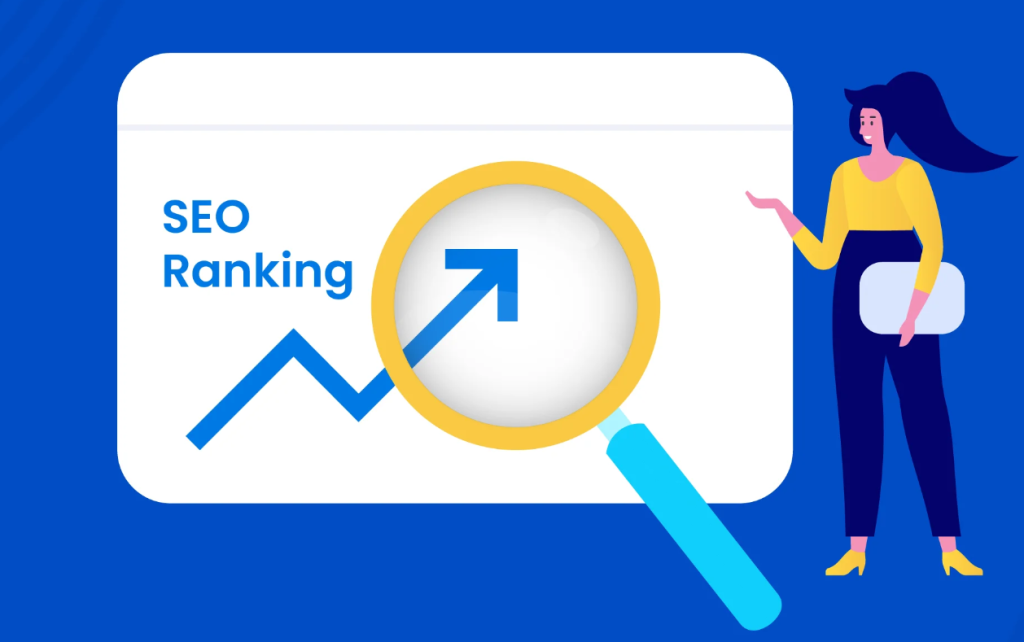Mastering SEO, Guide to Boost Your Online Visibility
In the ever-expanding digital landscape, the art of Search Engine Optimization (SEO) has emerged as a crucial driver of online success. This comprehensive guide, “Mastering SEO,” is your roadmap to improving your website’s visibility and conquering the virtual realm. By delving into the intricacies of SEO and adhering to best practices, you can elevate your website to the first page of Google and reach a wider audience.
The Importance of SEO
SEO, or Search Engine Optimization, is the practice of enhancing your website’s visibility on search engines like Google, Bing, and Yahoo. It is the secret sauce that can catapult your website to the top of search results. Why is SEO vital? Picture this: the internet hosts billions of websites, and users rely on search engines to find what they’re looking for. When your website is optimized for search engines, it becomes a beacon in the digital abyss, attracting users actively seeking your content, products, or services.
Understanding SEO Fundamentals
Before we dive into the intricate details of SEO, it’s essential to grasp the fundamentals. SEO is not a magic wand; it’s a strategic approach to aligning your website with search engines’ algorithms. These algorithms aim to provide users with the most relevant, valuable content in response to their queries. The better your website caters to these algorithms, the higher it ranks in search results, leading to more organic (non-paid) traffic.
SEO Basics
What is SEO?
SEO, which stands for Search Engine Optimization, is the practice of optimizing your website to improve its visibility and ranking on search engine results pages (SERPs). In other words, it’s about making your website more appealing to search engines like Google, so they are more likely to display it when users search for relevant topics or keywords.
SEO vs. SEM
It’s crucial to distinguish between SEO and SEM (Search Engine Marketing). While both aim to enhance a website’s visibility on search engines, they employ different strategies and serve different purposes.
SEO (Search Engine Optimization): SEO is all about organic, non-paid strategies to improve your website’s ranking. It includes optimizing content, using keywords effectively, and ensuring your website is user-friendly.
SEM (Search Engine Marketing): SEM, on the other hand, involves paid advertising efforts to appear on search engine results pages. This includes pay-per-click (PPC) campaigns and paid search engine listings.
The Role of Keywords in SEO
Keywords are the building blocks of SEO. They are the words or phrases that users enter into search engines when looking for information, products, or services. For example, if you run a bakery in New York, relevant keywords might include “New York bakery,” “fresh pastries in New York,” or “artisan bread New York.”
Choosing the right keywords and using them strategically throughout your website is essential for SEO success. It helps search engines understand the nature of your content and match it with relevant user queries.

On-Page SEO
Title Tags and Meta Descriptions
Title tags and meta descriptions are your website’s first impression on search engine users. They appear in search results and serve as a brief preview of what your page offers. Optimizing them is crucial for click-through rates and SEO.
Title Tags: These are the clickable headlines that appear in search results. They should be concise, descriptive, and include relevant keywords. A well-optimized title tag tells users and search engines what your page is about at a glance.
Meta Descriptions: Below the title tag, you’ll find the meta description. This is a summary of your page’s content. It should be compelling, concise, and also include relevant keywords. An enticing meta description can encourage users to click through to your page.
Header Tags (H1, H2, H3)
Header tags are like the chapter headings of a book for search engines. They provide structure and hierarchy to your content. Proper use of header tags not only helps users navigate your page but also signals the significance of different sections to search engines.
H1 Tags: The H1 tag is typically reserved for the main headline or title of your page. It should be clear, concise, and include your primary keyword.
H2 and H3 Tags: These are used for subsections and provide a hierarchy for your content. They should also include relevant keywords and help in structuring your content.
Optimizing Content
The content on your website is at the core of SEO. It’s what users are searching for, and it’s what search engines aim to deliver. To optimize your content effectively, consider the following:
Keyword Integration: Strategically incorporate keywords throughout your content, but maintain a natural and reader-friendly flow.
Quality Content: Ensure that your content is informative, engaging, and relevant to your audience’s needs and questions.
Content-Length: In many cases, longer, comprehensive content performs better in search results. It allows you to cover topics in-depth and provide more value to your audience.
Off-Page SEO
The Significance of Backlinks
Backlinks, also known as inbound links, are links from other websites to yours. They play a crucial role in SEO and are considered a vote of confidence from other webmasters. Why are they important?
Authority and Trust: High-quality backlinks signal to search engines that your content is trusted and authoritative.
Referral Traffic: Backlinks can drive direct traffic to your site when users click on them.
Diversity: A diverse backlink profile, including links from various reputable sources, is ideal.
Link Building Strategies
Building backlinks requires a strategic approach:
Content Creation: High-quality, shareable content naturally attracts backlinks. Create content that others want to link to.
Outreach: Reach out to industry influencers, bloggers, and websites in your niche. Offer to collaborate or provide guest posts.
Competitor Analysis: Analyze your competitors’ backlink profiles to identify potential link sources.
Social Signals
While not a direct ranking factor, social signals can indirectly influence your SEO efforts. These signals include likes, shares, comments, and overall social media presence. They indicate that users find your content valuable and engaging, potentially leading to more backlinks and improved visibility.
Technical SEO
Mobile Optimization
In the mobile-centric era, mobile optimization is no longer optional but a necessity. Google’s mobile-first indexing means that mobile compatibility significantly impacts your rankings. Here’s how to optimize for mobile:
Responsive Design: Ensure your website is responsive and adapts to various screen sizes.
Mobile Page Speed: Optimize images and minimize code to improve mobile page loading times.
Mobile SEO: Craft concise meta descriptions that display effectively on mobile devices.
Page Speed and Performance
Website speed is a critical factor in user experience and SEO. Users expect fast-loading pages and slow websites can lead to higher bounce rates and decreased search engine rankings. To improve your website’s speed and performance:
Image Optimization: Compress images to reduce their file size without sacrificing quality.
Caching: Implement browser caching to store frequently used resources, reducing load times.
Content Delivery Network (CDN): Utilize a CDN to distribute your content across multiple servers for faster loading.
SSL and Website Security
Secure websites with SSL (Secure Sockets Layer) certificates are favored by search engines. Security is essential not only for ranking but also for user trust. To secure your website:
SSL Certificate: Install an SSL certificate to encrypt data transmission between your website and users.
Regular Security Updates: Keep your website’s software and plugins up-to-date to prevent vulnerabilities.
Firewalls and Monitoring: Implement firewalls and security monitoring tools to protect against cyber threats.
Content Creation and Optimization
Quality Content Guidelines
Creating quality content is at the core of SEO. Your content should provide value to your audience, answer their questions, and engage them. Follow these guidelines for crafting quality content:
Originality: Ensure your content is unique, free from plagiarism, and provides fresh insights.
Relevance: Address topics and questions that align with your target audience’s interests.
User Intent: Understand the intent behind user queries and create content that fulfills those needs.
Keyword Research and Integration
Keywords are the compass of your SEO strategy. Conduct thorough keyword research to identify relevant terms and phrases that your audience uses. Once you’ve identified the right keywords, integrate them into your content effectively:
Keyword Placement: Incorporate keywords in the title, headings, and throughout the content naturally.
Latent Semantic Indexing (LSI) Keywords: Use LSI keywords to enhance content relevance and depth.
Keyword Density: Avoid over-optimization; use keywords in moderation to maintain a natural flow.
Content-Length and Depth
Long-form, comprehensive content often performs well in search results. It allows you to cover topics in-depth, provide valuable insights, and answer user queries thoroughly. When creating content, consider:
Word Count: Aim for a word count that covers the topic comprehensively without unnecessary fluff.
Use of Multimedia: Enhance your content with images, infographics, videos, and other multimedia elements to engage users.
Internal Linking: Link to other relevant pages on your website to guide users to more information.
User Experience and SEO
Mobile-Friendly Design
With the increasing use of mobile devices, having a responsive, mobile-friendly design is essential. Google’s mobile-first indexing means that mobile compatibility can significantly impact your rankings. Here’s how to optimize for mobile:
Responsive Design: Ensure your website is responsive and adapts to various screen sizes.
Mobile Page Speed: Optimize images and minimize code to improve mobile page loading times.
Mobile SEO: Craft concise meta descriptions that display effectively on mobile devices.
Site Navigation and Structure
An intuitive and easy-to-navigate website structure enhances the user experience, which, in turn, affects SEO. Users should be able to find the information they need quickly and effortlessly. Consider the following aspects:
Clear Navigation Menus: Use straightforward and descriptive menu labels.
Site Hierarchy: Organize content hierarchically to make it easier to navigate.
Internal Linking: Link-related pages to help users explore more of your content.
User Engagement Metrics
User engagement metrics, such as time on page, bounce rate, and click-through rate, provide valuable insights into how users interact with your website. High engagement indicates that users find your content valuable, which can positively impact SEO.
Time on Page: Longer average time on the page indicates that users are spending time consuming your content.
Bounce Rate: A lower bounce rate suggests that users are exploring more pages on your website.
Click-Through Rate (CTR): Higher CTR from search results indicates that your titles and descriptions are appealing.
Monitoring and Analytics
Tracking SEO Performance
Tracking and analyzing your SEO performance is crucial to assess the effectiveness of your strategies. By regularly monitoring key metrics, you can fine-tune your approach for better results. Use tools like Google Analytics and Google Search Console to gain insights into your website’s performance.
Organic Traffic: Monitor the amount of traffic coming from search engines.
Keyword Rankings: Track the rankings of your target keywords.
Conversion Rates: Analyze how well your website converts visitors into customers or subscribers.
Key Performance Indicators (KPIs)
Key Performance Indicators (KPIs) help you measure and evaluate the effectiveness of your SEO efforts. By setting clear KPIs, you can gauge progress and make data-driven decisions. Common KPIs in SEO include:
Organic Traffic Growth: The increase in the number of visitors from search engines.
Click-Through Rate (CTR): The percentage of users who click on your search results.
Bounce Rate: The rate at which visitors leave your site after viewing only one page.
Continuous Improvement and Adaptation
SEO is an ongoing process that requires constant improvement and adaptation. Regularly reviewing your analytics data, identifying areas for enhancement, and adjusting your strategy accordingly are essential for SEO success.
Data Analysis: Dive deep into your data to understand user behavior and preferences.
Algorithm Updates: Stay informed about search engine algorithm updates and adapt your strategy as needed.
Competitor Analysis: Keep an eye on your competitors and learn from their strategies.
Common SEO Challenges
Google Algorithm Updates
Search engines, particularly Google, frequently update their algorithms. These updates can have a significant impact on your website’s rankings. Staying informed about these changes and adapting your strategy is vital for long-term success.
Competing with Established Websites: Established websites may have a considerable advantage in terms of authority and backlinks. Overcoming this challenge requires patience and a strategic approach.
Black-Hat SEO Techniques: While tempting, black-hat SEO techniques like keyword stuffing or link schemes can lead to penalties. It’s best to focus on ethical, sustainable SEO practices.
Content Duplication and Plagiarism: Duplicate content across your website or copied from other sources can harm your SEO. Ensure your content is original and valuable.
Mobile Optimization
As mobile device usage continues to surge, mobile optimization is paramount. Google prioritizes mobile-friendly websites, and neglecting this aspect can lead to lower rankings and less visibility.
Responsive Design: Ensure your website is responsive and provides an excellent user experience on mobile devices.
Mobile Page Speed: Optimize your site for faster loading times on mobile.
Mobile SEO: Craft meta descriptions and content suitable for mobile users.
SEO Analytics
Understanding and effectively using SEO analytics is a challenge for many website owners. It’s important to make sense of the data and use it to make informed decisions.
Google Analytics: Leverage Google Analytics to gain insights into your website’s performance.
Interpreting Metrics: Understand metrics such as organic traffic, bounce rates, and conversion rates.
Adjusting Strategies: Use analytics to adjust your SEO strategies based on what’s working and what needs improvement.
FAQs
What is the ideal keyword density for SEO?
Keyword density, or the percentage of times a keyword appears in your content, used to be a significant factor in SEO. However, modern search engines prioritize content quality over keyword density. Focus on natural language and user experience, and don’t obsess over keyword density.
How long does it take to see SEO results?
The timeline for SEO results varies depending on factors like competition, website authority, and the quality of your SEO efforts. Generally, you may start seeing noticeable improvements in several months, but substantial results can take up to a year or more. SEO is a long-term investment.
Is SEO the same for all search engines?
While the fundamental principles of SEO apply across search engines, there are nuances and differences in algorithms. Google is the dominant search engine, so many SEO strategies primarily target it. However, optimizing for Google often benefits your visibility on other search engines like Bing and Yahoo.
Should I hire an SEO expert or DIY?
The choice between hiring an SEO expert or handling it yourself depends on factors like your website’s size, your expertise, and your available time. Small websites with limited resources may opt for DIY SEO. However, as your site and business grow, enlisting the help of an SEO expert or agency can provide valuable insights and save time.
What are the common SEO mistakes to avoid?
Common SEO mistakes include keyword stuffing, neglecting mobile optimization, ignoring analytics, and using black-hat SEO techniques. Avoid these pitfalls by focusing on ethical SEO practices, user experience, and staying updated with SEO trends.
Conclusion
Recap of SEO Essentials
In this comprehensive guide, we’ve unraveled the intricate world of SEO marketing, providing a structured approach to unlock the power of online visibility. From understanding the basics of SEO to embracing the MECE framework for a comprehensive strategy, you’ve gained insights into the fundamental components of SEO.
We’ve explored the importance of keyword research and optimization, the art of crafting high-quality content, building quality backlinks, and enhancing user experience. Technical SEO, monitoring and analytics, and common SEO challenges have all been dissected.
Emphasizing the Continuous Nature of SEO
Remember, SEO is not a static endeavor but a dynamic journey. It requires ongoing adaptation to the ever-evolving digital landscape, frequent Google algorithm updates, and the perseverance to overcome challenges.
Empowering Your Website for Top Rankings
By adhering to the principles outlined in this guide, you’re better equipped to steer your website toward the coveted top spots on search engine results pages, ultimately increasing your online visibility and reaching a wider audience.
As you embark on your SEO marketing journey, keep the MECE framework in mind, continuously monitor your performance, and be prepared to adapt your strategies. Success in the digital realm belongs to those who understand the importance of SEO and invest in its mastery.
Should you have further questions or need assistance, feel free to explore additional resources or seek the guidance of SEO experts to aid your journey.




